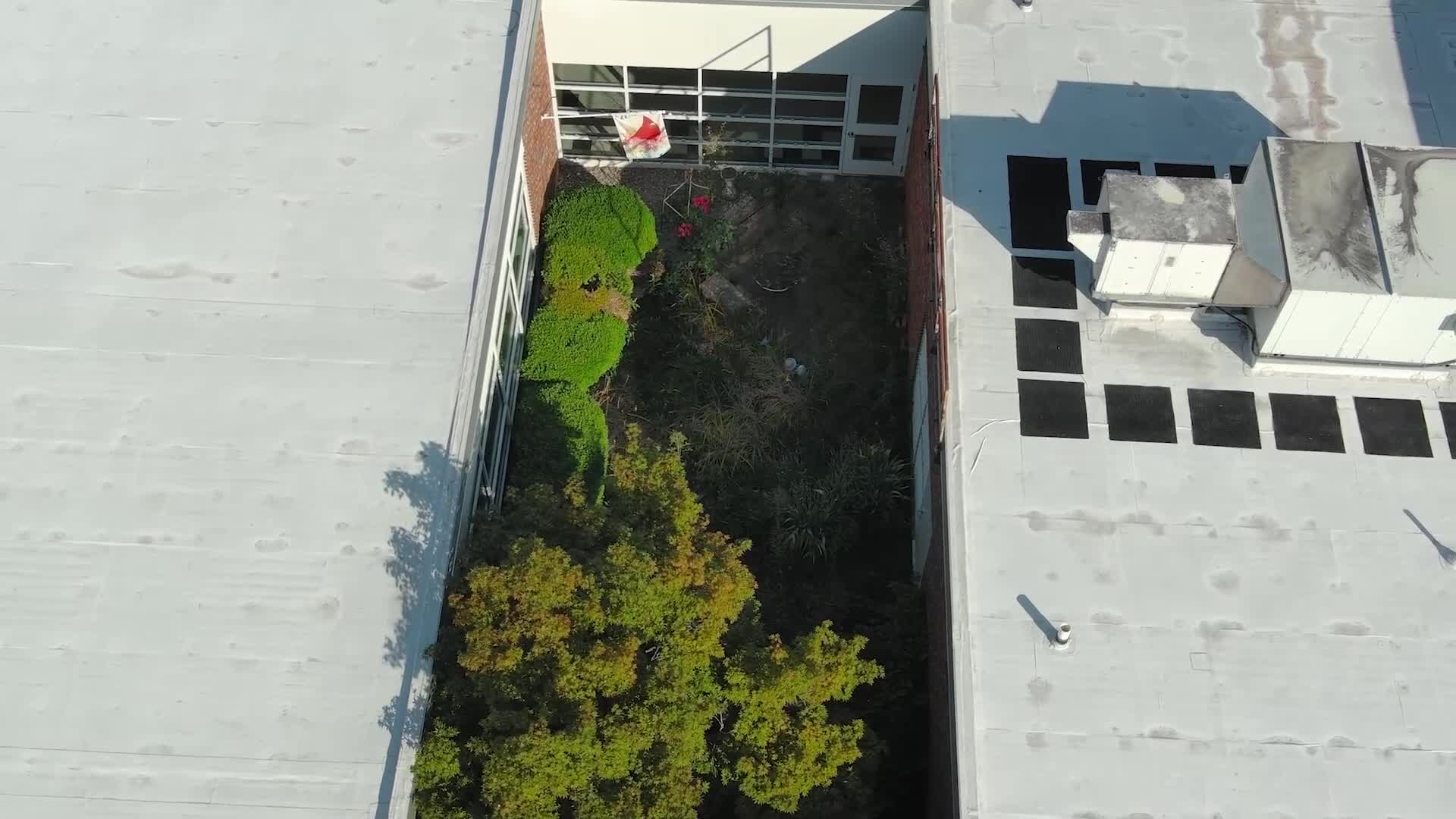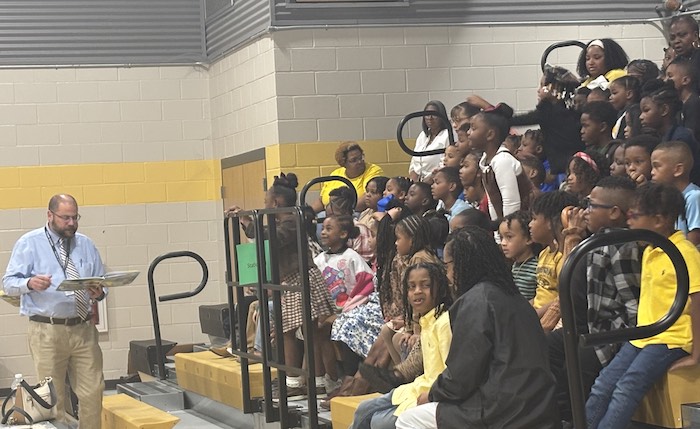Roanoke County Public Schools joins national initiative to reinvent HS education – WDBJ7

Advancing Sustainable Development Goal 4: Quality Education through Educational Innovation
Introduction
Roanoke County Public Schools (RCPS) has received recognition from the Carnegie Foundation for the Advancement of Teaching for its significant contributions to reshaping secondary education. This initiative aligns directly with the United Nations’ Sustainable Development Goal 4 (SDG 4), which aims to ensure inclusive and equitable quality education and promote lifelong learning opportunities for all. The district’s efforts are part of a national movement to innovate beyond traditional educational metrics.
The “Future of High School Network” and SDG 17
The Carnegie Foundation, which established the foundational “Carnegie-unit” standard over a century ago, is now leading a paradigm shift through its “Future of High School Network.” This initiative brings together 24 high school systems to pioneer new models for student learning. This collaborative effort exemplifies SDG 17 (Partnerships for the Goals), by creating a multi-stakeholder partnership between a philanthropic foundation and public school systems to achieve educational reform.
- Objective: To reinvent traditional standards and develop core skills relevant to post-secondary success.
- Network: A coalition of 24 school systems from across the United States.
- Support: Each participating system receives a $100,000 grant and ongoing resources from the Carnegie Foundation to enhance its innovative programs.
RCPS “Opportunity Ready” Program: A Model for SDG 4 Targets
Core Components and Skill Development
RCPS was selected for its “Opportunity Ready” graduate program, a K-12 initiative designed to equip students with skills essential for the 21st-century workforce and active citizenship. This program directly addresses several targets within SDG 4.
- Target 4.4 (Skills for Employment): The program focuses on developing and demonstrating proficiency in five core competencies:
- Communication
- Collaboration
- Critical Thinking
- Creativity
- Citizenship
- Target 4.7 (Education for Sustainable Development and Global Citizenship): The inclusion of “citizenship” as a core skill ensures learners acquire the knowledge and skills needed to promote sustainable development and global citizenship.
The program culminates in a senior-year portfolio defense, where students present their work to teachers and staff. Future plans include integrating business professionals and parents into this assessment process, further strengthening the link between education and the community in line with SDG 17.
Program Impact and Contribution to SDG 8
The “Opportunity Ready” initiative not only enhances the quality of education but also contributes to SDG 8 (Decent Work and Economic Growth) by preparing students for a successful transition into the workforce or further education.
- Initial Success: In its first year of full implementation across all five district high schools, approximately 300 students earned the “Opportunity Ready” graduate diploma seal.
- Future Expansion: RCPS plans to expand the program, embedding dedicated time into the academic calendar for portfolio defenses.
- Economic Alignment: By making students “Opportunity Ready,” the program directly addresses SDG Target 8.6, which aims to reduce the proportion of youth not in employment, education, or training (NEET).
Analysis of Sustainable Development Goals (SDGs) in the Article
1. Which SDGs are addressed or connected to the issues highlighted in the article?
-
SDG 4: Quality Education
The entire article is centered on improving the quality and relevance of high school education. It discusses the “Future of High School Network” initiated by the Carnegie Foundation, which aims to reinvent traditional educational standards. The focus is on ensuring education leads to effective learning outcomes by developing core skills for students, as highlighted by the statement, “every course is developing a core set of skills for young people.”
-
SDG 8: Decent Work and Economic Growth
The article connects educational reform to students’ future economic opportunities. The “Opportunity Ready” program is designed to prepare students for life after graduation, ensuring they have skills that are valuable in the job market. The goal is to make education “something that is going to help me when I leave these walls,” directly linking educational outcomes to future employment and economic well-being.
-
SDG 17: Partnerships for the Goals
The initiative described is built on collaboration. The article mentions the partnership between Roanoke County Public Schools (a public entity) and the Carnegie Foundation (a private foundation). It also describes the “Future of High School Network” as a collaboration of “24 high school systems from across the country.” Furthermore, the plan to “bring in business professionals and parents” to evaluate student portfolios represents a public-private and community partnership.
2. What specific targets under those SDGs can be identified based on the article’s content?
-
Target 4.1: By 2030, ensure that all girls and boys complete free, equitable and quality primary and secondary education leading to relevant and effective learning outcomes.
- The article’s focus on reinventing high school education to be more skills-based directly addresses the need for “relevant and effective learning outcomes.” The “Opportunity Ready” program, which develops skills in communication, collaboration, and critical thinking, is a clear example of this.
-
Target 4.4: By 2030, substantially increase the number of youth and adults who have relevant skills, including technical and vocational skills, for employment, decent jobs and entrepreneurship.
- The program aims to make graduates “Opportunity Ready,” equipping them with a “core set of skills” to help them succeed after high school. The involvement of “business professionals” in the assessment process further emphasizes the goal of aligning education with the skills needed for employment.
-
Target 4.7: By 2030, ensure that all learners acquire the knowledge and skills needed to promote sustainable development, including… global citizenship…
- The “Opportunity Ready” initiative explicitly lists “citizenship” as one of the five key skills it helps students develop and demonstrate, directly aligning with this target’s goal of fostering global citizenship through education.
-
Target 8.6: By 2020, substantially reduce the proportion of youth not in employment, education or training.
- By providing students with demonstrable, real-world skills, the program aims to ensure a smoother transition from high school to either higher education or the workforce, thereby helping to reduce the number of young people who are not in employment, education, or training (NEET).
-
Target 17.17: Encourage and promote effective public, public-private and civil society partnerships…
- The article details a multi-level partnership: the Carnegie Foundation (civil society) working with 24 school systems (public), and the local school system planning to incorporate “business professionals” (private sector) and parents into its educational process.
3. Are there any indicators mentioned or implied in the article that can be used to measure progress towards the identified targets?
- Number of students earning a specific qualification: The article explicitly states, “We ended up with about 300 students across Roanoke County Schools who earned their Opportunity Ready graduate diploma seals.” This is a direct quantitative indicator of the program’s outcome and reach.
- Program expansion and participation rate: Progress is indicated by the plan for growth. The article notes, “This past year is the first time all five of our high schools participated,” and “We want to expand that next year.” Measuring the increase in participating schools and students serves as an indicator of success.
- Financial investment in partnerships: The article mentions that “Each school system in the Future of High School Network received $100,000 in grant funding to enhance its efforts.” This financial figure is a concrete indicator of the resources being mobilized through the partnership.
- Number of partners in a network: The article specifies that the “Future of High School Network” brings together “24 high school systems from across the country,” which serves as an indicator of the scale of the partnership.
4. Table of SDGs, Targets, and Indicators
| SDGs | Targets | Indicators |
|---|---|---|
| SDG 4: Quality Education |
4.1: Ensure quality secondary education leading to relevant and effective learning outcomes.
4.4: Increase the number of youth with relevant skills for employment. 4.7: Ensure learners acquire skills for sustainable development, including citizenship. |
– Number of students who earned their “Opportunity Ready graduate diploma seals” (stated as “about 300 students”).
– Number of participating high schools (stated as “all five of our high schools”). – Planned expansion of the program (“We want to expand that next year”). |
| SDG 8: Decent Work and Economic Growth | 8.6: Reduce the proportion of youth not in employment, education or training (NEET). | – (Implied) The rate of graduates who successfully transition to employment or further education as a result of the “Opportunity Ready” program. |
| SDG 17: Partnerships for the Goals | 17.17: Encourage and promote effective public, public-private and civil society partnerships. |
– Number of school systems in the network (stated as “24 high school systems”).
– Amount of grant funding provided (“$100,000 in grant funding” per school system). – (Implied) Number of “business professionals and parents” participating in portfolio defenses. |
Source: wdbj7.com

What is Your Reaction?
 Like
0
Like
0
 Dislike
0
Dislike
0
 Love
0
Love
0
 Funny
0
Funny
0
 Angry
0
Angry
0
 Sad
0
Sad
0
 Wow
0
Wow
0













































































